 |
|
|

BOOK SALE - I'm selling off some scholarly books via Amazon Marketplace. Have a look!

|
2006
December
28-31
|
Miscellany
I'm busy writing something else, so I'll close out 2006 with a few short notes.
Let me wish you a blessed new year... I'll see you here again on January 1.
The BBC says
almost the same thing I said about spam, except that they stop
short of calling it a national security issue.
Let me add one more opinion:
Fewer than 10 people are behind almost all spam.
Not necessarily the same 10 at all times, of course, but they rotate slowly.
And they're easier to catch than Osama. In fact all it would probably take is a
$25k bounty (per spammer). Some ISPs should get together and offer one;
it's cheaper than spam filtering.
Hoya
has bought Pentax.
Hoya has been around a long time as Japan's leading maker of optical glass and filters,
and as a manufacturer of lenses sold under other names.
Pentax is a long-respected camera maker with some up-and-coming new DSLRs.
I hope Hoya will let Pentax continue being Pentax.
Jeff Duntemann adds
some items to my list of the worst Christmas songs.
A pen that writes forever without ink?
I don't think so. It's basically a metal pencil. It may last 100 times as long as an ordinary pencil,
but that's not forever. "Never needs sharpening" is an exaggeration.
Finally, if you've read Astrophotography for
the Amateur and know all about afocal coupling, consider
this combination
of monocular and camera phone. If Zeiss made telephones, they'd surely make this as an accessory!
Permanent link to this entry


|

|
2006
December
27
|
Spam as a national security issue
Copy of a letter I've just sent to the Atlanta Journal-Constitution:
Recent studies show that 90% of e-mail is now spam. That's certainly my own experience;
in the past day I've received 25 genuine messages and 211 come-ons from charlatans.
These spammers are not legitimate businesses. They conceal their identities while they
violate laws against fraud, impersonation, harassment, and computer trespass. They
redistribute their e-mail from virus-infected computers of unwary victims so the messages
won't be traced to their real origin.
Why doesn't anybody call this what it is — an attack on our national infrastructure?
If 90% of our telephone lines or highways were tied up by saboteurs, we'd declare war.
But nobody seems to care about the Internet. Computer geeks want to solve all problems
with technology; they're all locksmiths and no sheriffs. Lawmakers want to live in 1950
and pretend the Internet is just a hobby.
Much of the spam apparently originates in Russia, China, or eastern Europe, and is not
actually designed to sell anything. Spammers often insult their audiences or send them
messages in foreign languages. It looks as if their real objective is just to clog up the
e-mail system.
You and I have certainly not received all our e-mail during the past 2 months because of
heavy spam filtering and overloaded servers. And we've wasted plenty of time dealing with
the spam that gets through. Can we have some law enforcement here, please, or even national
defense?
Permanent link to this entry
The imperfect fungibility of time
A management principle that I live by, and which I think is all my own, I call
the law of the imperfect fungibility of time.
A substance or commodity is called fungible if you can replace any quantity of it
with another equal quantity of the same thing.
Water is fungible (as long as the quality doesn't vary).
Identical manufactured objects are fungible.
Shares of stock are fungible because it absolutely
does not matter which 100 shares of IBM you own; all that matters is the quantity.
Money is perfectly fungible, which is one reason it's so useful.
Houses are not fungible. Neither are handmade artifacts, rare paintings, or even used cars.
Well, my insight is that time is not fungible.
An hour today is not equivalent to an hour tomorrow, at least when human activity is concerned.
Eight hours' work certainly cannot be done in 28,800 separate one-second sessions.
It can't even be done the same way in a different eight-hour session.
The reason? We human beings are chaotic systems, constantly changing and fluctuating.
Our talents, abilities, and inclinations vary in a complex way. Who knows whether my SAT score
would have been higher or lower if I had taken the test on a different day?
(Cathy wound up with exactly the same score, which is proof that heredity is worth something.
But I digress.)
The imperfect fungibility of time figures in how I run my consulting practice, and it's probably
why I work so hard — and also why my products are so good.
When a client buys 10 hours of my time, I don't give him just any 10 hours.
I give him 10 hours when I'm actually focused on his project and inclined to work on it.
Right now I'm writing a book.
The tactic that I'm following is to map out detailed outlines as early as possible.
Then I'll have it divided up into tidbit-sized tasks, and I can follow my nose.
I can do whichever one seems the most fun at a particular time.
Sometimes I feel like writing; at other times I feel like making diagrams,
or doing math. There's room for each.
One of the most enjoyable combinations of projects occurred in 1982, when I was writing
Syntactic Theory in the High Middle Ages and Astrophotography for the Amateur
at the same time. When I got tired of Latin, I did optics, and vice versa. Each book was
a welcome respite from the other. Except when they intersected — I used a slide duplicator
to make contrast-enhanced copies of a slide of a medieval manuscript.
Because of the imperfect fungibility of time, I'll probably be writing something other than
blog entries for most of the rest of 2006. But I'm not gone yet. Drop by one or two more
times before New Year's.
Permanent link to this entry


|

|
2006
December
26
|
Well, that was Christmas...
We had a good Christmas this year, highlighted by a number of humorous and surprising gifts.
Sharon got a set of magnetic polka-dots for decorating her car.
Both girls got slippers that look like beasts (bears, tigers, or something,
and nearly as big as our puppies).
Melody got, inter alia, a number of CDs and kitchen gadgets.
And I got a mint-condition Canon EOS 2000 film SLR (as if I needed another camera!) which
Melody picked up for $35 on eBay. Also some salted peanuts, and a cheese cutter
to cut them with (?).
But mostly we just had a good time together.
Medley that never should have happened:
There are two songs on the stage of history named "Joy to the World."
One is a well-known Christmas carol; the other starts out, "Jeremiah was
a bullfrog," makes little or no sense, and was my nemesis in 1971, when the local
radio station in Valdosta would play nothing else. Well, someone has combined them.
May you never have to hear it.
Permanent link to this entry
Image processing tutorials
I've updated my tutorials on image processing with
MaxDSLR/MaxIm DL and
Nebulosity.
The latter is a very low-priced program quite useful to DSLR astrophotographers.
Permanent link to this entry


|

|
2006
December
24-25
|
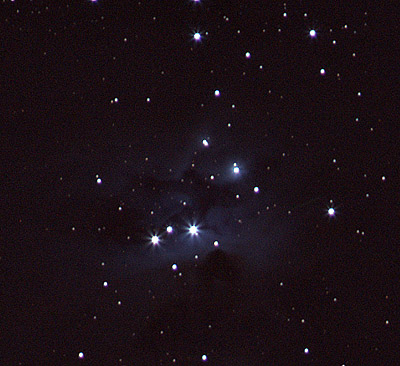
Today the Virgin gives birth to the Supreme Being
And today the earth shelters the Unapproachable One.
Angels and shepherds sing His praise;
Led by the star, wise men make their way.
For unto us is born
A newborn child, from before all time God.
St. Romanos Melodos
|
Permanent link to this entry


|

|
2006
December
23
|
First light
Finally, a "first light" picture from the new Canon XTi and 300/4 lens.
This was taken in my driveway on December 11, the day the equipment arrived,
but not processed until now. Here you see the Pleiades star cluster,
a stack of three 3-minute exposures at ISO 400.

These were the very first three celestial images taken with the new camera.
They were processed with MaxIm DL, Photoshop, and Neat Image.
The last of these is a grain-removing utility; it was the missing link in my processing procedure.
You've already seen a hydrogen-alpha experiment done with the same
camera on the same night, as well as a very rough (not highly processed)
image of the Orion Nebula from December 15.
December 15, in fact, is when I got out into the country with the new equipment, and I came back
with a good catch. Here's the North America Nebula:

This is a stack of four 3-minute exposures with the 300-mm lens wide open.
The actual image comprises 10 megapixels, sharp all the way to the corners, and may be
the most detailed celestial image I've ever taken. It would print well as a 3-foot poster.
Now here's the Orion Nebula, one of my favorite photo subjects.
This is the central part of the field from a stack of two 6-minute exposures
with the 300-mm lens at f/5.6.
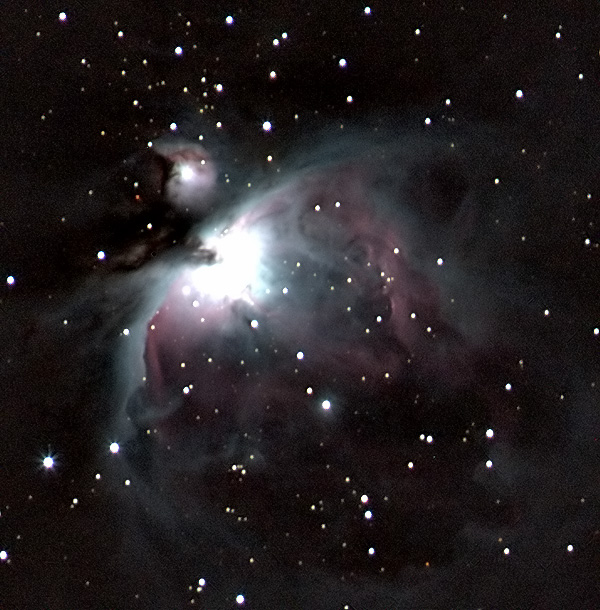
Here's a rather overprocessed image of the star Zeta Orionis and the nebulae
near it, including the Horsehead, faintly visible as a black notch in the streak
just below center. Stack of seven 3-minute exposures at f/5.6.
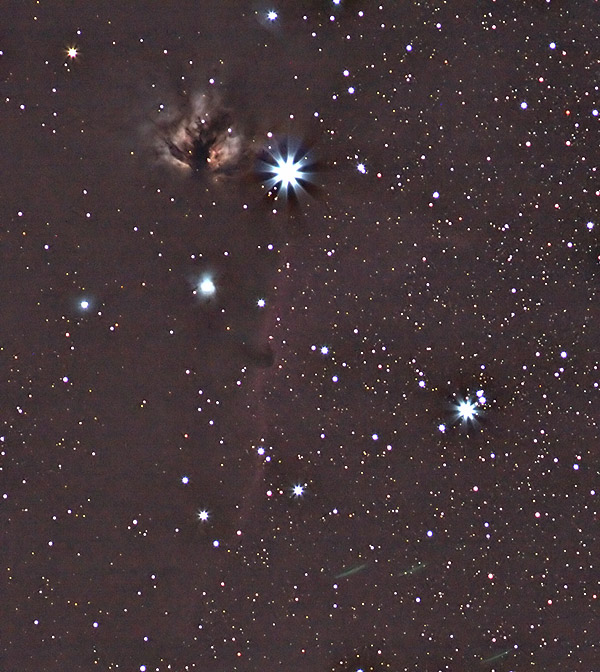
The bright streaks at the lower right are apparently reflections.
Permanent link to this entry
Monumental mailbox
The latest addition to the architecture of Saint George Drive is our new mailbox.
The old one fell over a few days ago, and I patched it up, but it was clearly time
for a new one. We decided to replace the box as well as the post.
We got a "No. 2 Rural Mailbox" (item 2C-BLK on this page)
instead of the traditional No. 1. That means it's almost twice as wide and twice as high.
Crucially, 9-inch-wide magazines can lie flat in it.
I think everybody needs a No. 2 mailbox in this era of online shopping.
It will save the mail carrier numerous trips up to the house.
My British readers may think it odd that Americans' mail is usually delivered to
a box on a post beside the road rather than directly to the house.
But that's the way it's been for a long time.
Older neighborhoods, built before 1940 or so, do get house-to-house mail delivery.
But housing developments of more recent vintage almost always have "rural" mailboxes
(now called "curbside" mailboxes),
whose design was standardized in 1901 (see p. 27 of this
document).
The box is marked "U. S. Mail" so that its contents will be protected by laws against
tampering with mail in transit.
In fact, the box is allegedly government property during the time it is set up and in use,
although the homeowner is perfectly free to take it down and put up a new one at any time.
Permanent link to this entry
How I fixed the mixer
How often, when we think a machine is worn out, is the problem just the lubrication?
Two days ago, Melody's mixer — actually the mixer module of a "kitchen center" that
is also a blender — started making a horrible screeching noise.
Turning it by hand, I consistently got a rather loud squawk, cause unknown.
With nothing to lose, I opened it up and determined that nothing seemed to be broken or
out of place. But the grease had dried up.
I put in plenty of spray lithium grease (a substance rather like whipped cream) and the
problem disappeared. The mixer is now quieter than it has been in years.
The squawking came from metal gears chattering against a plastic bearing.
Permanent link to this entry


|

|
2006
December
22
|
Fond farewell
Yesterday I sold two of the finest lenses I've ever owned, although the buyer
has wisely requested that they not be shipped until December 26 so they won't be
in transit during the Christmas weekend.
Here's the Nikon 180-mm f/2.8 ED IF AF-D lens that has served me well since 2000,
and a picture of the North America Nebula taken with it:
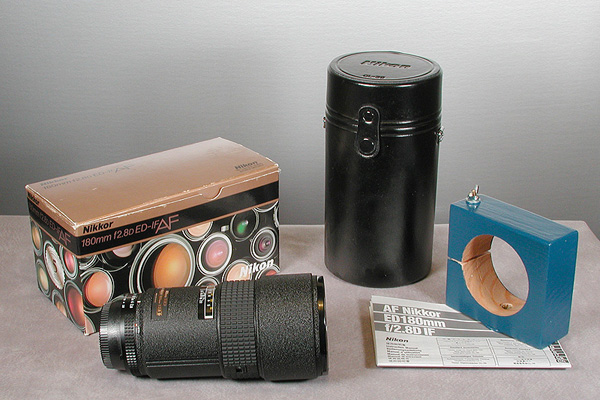
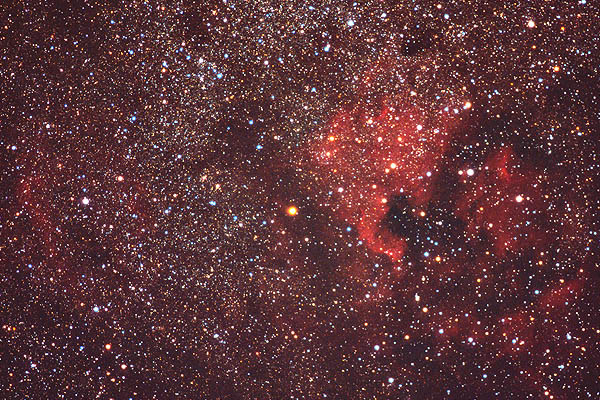
That's a
15-minute exposure on Ektachrome E100GX at f/2.8.
And here's the Nikon 300-mm f/4 ED IF AF lens ("old" model, with sturdy tripod
mount) that I bought secondhand in 2002 and was using, until very recently, with an adapter on my
Canon camera bodies. It's followed by a film photograph of M31 taken with it.
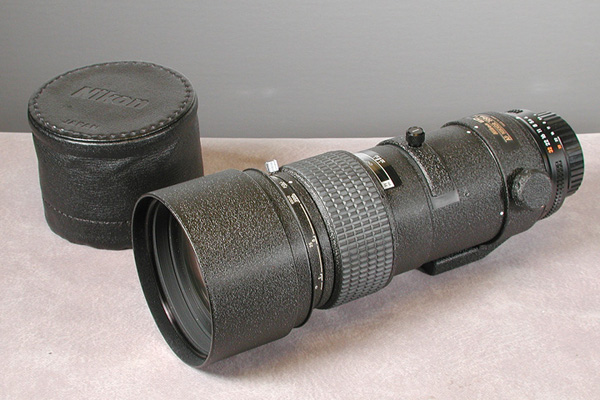

That's a
30-minute exposure on preflashed Elite Chrome 200 at f/4.
So am I downgrading? Not at all. Thanks to Santa Claus and my consulting clients,
I just invested in another superb lens, a
Canon 300-mm f/4 EF L USM (non-IS)
with a
1.4x converter that makes it 420 mm f/5.6.
And I've been using a
Sigma 105/2.8 DG EX lens for some time.
All of these give pinpoint stars all the way to the corners, just like the Nikon lenses.
Permanent link to this entry


|

|
2006
December
21
|
MaxDSLR / MaxIm DL tutorial
No blog entry today; instead I wrote
this.
Permanent link to this entry


|

|
2006
December
20
|
Colors corrected
The color problem in numerous pictures in this blog has been
corrected. I invite you to scroll back through
November,
October,
September, and even
August, to see corrected pictures.
I didn't notice the error until now because I didn't realize that
emission nebulae are blue, not red when seen by a DSLR.
I had gotten accustomed their bright red color on Ektachrome film and
on composites made from old red and blue observatory images.
But the truth is that most nebulae are actually brighter at hydrogen-beta
and O-III wavelengths (around 500 nm) than at hydrogen-alpha (656 nm).
Color film doesn't see 500 nm very well; DSLRs do.
The color error was giving me nice red nebulae and I didn't realize anything
was wrong, other than maybe a pesky yellowish cast, until I processed some
daytime pictures.
My error? I didn't check "Offset X" and "Offset Y" in the MaxIm DL "Convert RGB" window.
How did I fix it? By simply swapping the red and blue values for each pixel in the finished picture.
This required the following whopping big C# program.
In some cases I then used Photoshop to adjust the overall color balance to get rid of a blue cast
(formerly a red cast).
private void buttonOpen_Click(object sender, EventArgs e)
{
DialogResult r = openFileDialog1.ShowDialog();
if (r == DialogResult.OK)
{
pictureBox1.Image = Image.FromFile(openFileDialog1.FileName);
buttonProcess.Enabled = true;
}
}
private void buttonProcess_Click(object sender, EventArgs e)
{
Cursor.Current = Cursors.WaitCursor;
Bitmap im = new Bitmap(pictureBox1.Image);
int x, y;
for (x = 0; x < im.Width; x++)
for (y = 0; y < im.Height; y++)
{
Color pixelColor = im.GetPixel(x, y);
Color newColor =
Color.FromArgb(pixelColor.B, pixelColor.G, pixelColor.R);
im.SetPixel(x, y, newColor);
}
pictureBox1.Image = im;
Cursor.Current = Cursors.Default;
buttonSave.Enabled = true;
}
private void buttonSave_Click(object sender, EventArgs e)
{
string fn = openFileDialog1.FileName;
saveFileDialog1.InitialDirectory = System.IO.Path.GetDirectoryName(fn);
string newfn =
System.IO.Path.GetDirectoryName(fn) +
"\\SWAPRB-" + System.IO.Path.GetFileName(fn);
saveFileDialog1.FileName = newfn;
DialogResult r = saveFileDialog1.ShowDialog();
if (r == DialogResult.OK)
{
pictureBox1.Image.Save(saveFileDialog1.FileName,
System.Drawing.Imaging.ImageFormat.Jpeg);
MessageBox.Show("File saved.");
}
}
Graphics programming is easier than it used to be, isn't it?
In fact, more work on my part
went into constructing the new filename for the corrected file
than into doing the correction!
Permanent link to this entry


|

|
2006
December
19
|
What were Hillotypes?
In the early 1850s, Levi Hill invented color photography.
Or at least he claimed he did.
He called his pictures Hillotypes but was never able to document
and re-create the process.
They were a lot like daguerreotypes, but with faint colors visible.
For decades Hill was dismissed as a charlatan.
But in fact about 60 of his Hillotypes are
in the Smithsonian,
where they were neglected for decades,
and they aren't daguerreotypes with paint on them, as earlier historians thought.
Further, his process has finally been re-created, although it's very finicky.
For details see Joseph Boudreau's article,
"Color Daguerreotypes: Hillotypes Recreated," in
Pioneers of Photography,
published in 1987 by the Society for Imaging Science and Technology.
Recall how a daguerreotype works.
Ordinary film uses silver halide crystals in an emulsion, but a daguerrotype
uses polished silver with a halide coating.
Thus, the developed negative is like a mirror with cloudy areas where light has acted upon it.
By illuminating it just right, you can view the negative as a positive.
Make the mirror reflect something black, and the cloudy areas will look lighter
than the clear areas.
Hillotypes are like that, but with faint, imperfect colors.
I think that if Hill were a charlatan, he would have produced better colors than that.
Both his original Hillotypes and Boudreau's re-creation are really rather wimpy looking.
I suspect that the Hillotype actually distinguishes just two primary colors, not three.
Further, there's a good reason why Hill did not publish and perfect the process right away.
He was under pressure from daguerreotypists who were trying to put him out business
before he could put them out of business.
So what were Hillotypes? Even after Boudreau's success, the chemistry of Hillotypes is not
clearly understood. Like other photographic processes, it may actually rely on impurities in
some of the chemicals, making it very hard to replicate.
I think what happened is that Hill got two photochemical processes going on at the same time,
sensitive to different wavelengths of light, and yielding images with different tints.
By sheer good luck the tint produced by each process was somewhat similar to
the color of the light that
produced it. And that's how color photography was (almost) born.
Permanent link to this entry
Ham radio dead?
The FCC has announced that it is
dropping all Morse code requirements
for ham radio licenses.
And already, some licensed hams are screaming that their hobby is being killed off.
They argue that the discipline of learning Morse code keeps out the riff-raff.
Or something like that.
Personally, I think the Morse requirement should have been dropped around 1970
and replaced by an exam on various kinds of digital communication.
By waiting until the 1990s to cut back Morse requirements, the FCC allowed
ham radio to start shifting from high technology toward becoming
Ye Antique Radio Museum.
Now, I enjoy antique radio as much as anybody —
there's a working Hallicrafters S-40B in my study, as well as a replica of the
crystal set I built as a child — but nostalgia not the reason the government
allocates large segments of the radio spectrum to hams.
It's to encourage self-training, experimentation, and public service.
The fact is, ham radio is thriving.
"Codeless" hams (which have existed in some license classes for more than a decade) have
certainly not ruined it.
In fact, I find their lack of snobbery refreshing.
And if Morse code really has the technical advantages claimed for it, it will never die.
It is still the simplest communication mode; the only one that can have either a human or
a computer at either end (because computers can not only produce Morse but also read it);
and almost the best way to communicate with minimum power (it's much more efficient than
voice, but some slow digital modes surpass it).
(By the way, I have been licensed as N4TMI since 1988, Advanced Class since, I think, 1990.
But I rarely transmit. As an excessively well-known writer and blogger,
I find myself wanting less communication, not more.)
Permanent link to this entry
Color problem diagnosed
The reason some of my astrophotos for several months have had the wrong colors is due
to skipping a row and column in the Bayer matrix.
The pixels of a digital camera are
arranged like this:
G B G B
R G R G
G B G B
R G R G
If you skip the first row and column, you get the same pattern, but with R and B
(red and blue) interchanged. That's at least roughly what happened to me.
More precisely, the software didn't need to skip a row or a column, it just
needed to be told that the pattern started with G B rather than G R.
Or something like that.
I'll post some corrected pictures and a fuller explanation soon.
Permanent link to this entry


|

|
2006
December
18
|
Miscellany
Some (not all) of the astrophotos that I've been posting since August suffer from
an unusual yellow tinge and other problems with color rendition.
This is due to a software problem which I'm in the process of tracking down.
I'll post corrected photos and a full explanation when the problem is solved.
It is definitely legal to unlock a cell phone.
Our Copyright Office
says so.
Unlocking a cell phone does not count as any of the acts that are forbidden
by our unusual "Digital Millennium Copyright Act."
Buy my lenses:
I'm selling two excellent Nikon telephoto lenses,
a 180/2.8
and a 300/4,
both modern autofocus lenses that work with the newest Nikons,
in excellent condition.
Follow the link to see not only the lenses, but also an astrophoto taken with each of them.
Permanent link to this entry


|

|
2006
December
17
|
I'm dreaming of a hot Christmas
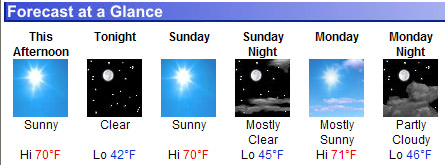
The last time we had weather this warm in the winter, it was
followed 3 weeks later by an ice storm.
Permanent link to this entry
Worst Christmas songs?
On humanitarian grounds I continue to advocate an end to "Jingle Bell Rock."
Last year, it was one of about three or four songs that our local mall played over and over.
The trouble is, if you want a Christmas song that doesn't mention Christ and
also isn't aimed at children, you don't have much left.
Besides "Jingle Bell Rock," other songs that particularly annoy me are:
- "I'll Be Home for Christmas (If Only In My Dreams)." Sappy and pathetic.
- "Blue Christmas." Sad and pathetic. May have had some merit once, but after hearing it
2000 times...
- "Rockin' Around the Christmas Tree." 'Nuff said.
- "Some Children See Him Lily White." Claims to be about Jesus but reduces him to a fictional
character whom you are supposed to imagine as being of the same ethnicity as yourself, whatever
it might be.
Folks, Jesus really existed and was Jewish. Deal with it. If you can't honor Him
without changing him to your own race, you need to examine yourself for latent racism.
Irving Berlin's "White Christmas" almost qualifies as annoying; coming from a less
skilled songwriter, it would have been. It's actually the theme from a movie that I haven't seen,
and as a movie theme, it is defensible. Many movie themes are shallow without the movie.
But this song is not about what Christmas means to me.
Any other nominations?
And I'm sorry if "Jingle Bell Rock" is your favorite song. I'm bound to hear from someone
who really loves it.
Permanent link to this entry


|

|
2006
December
16
|
Yet another Orion Nebula picture
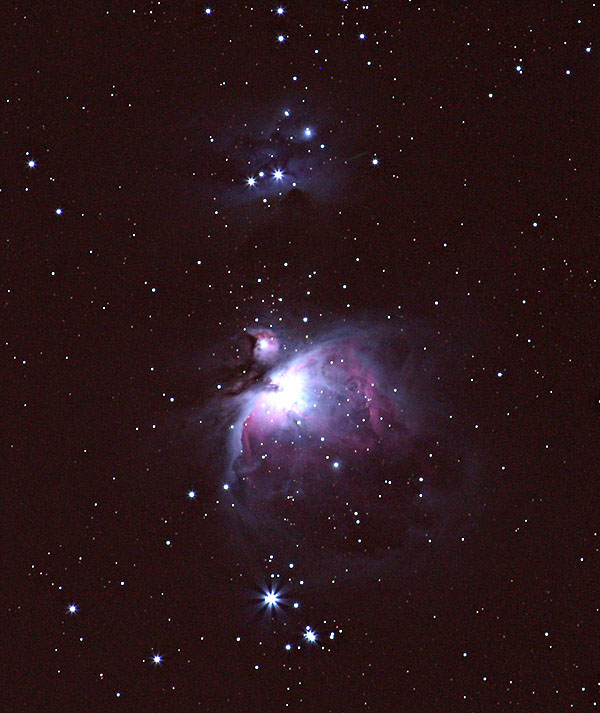
Last night we had a rare combination of warm (50 F), clear weather, so I went to my usual
dark-sky site and took pictures of Orion.
(I had actually never photographed Orion against a dark sky, because usually, when Orion
is in the sky, either I'm too busy or it's too cold to go out in the country.)
This adds to my huge backlog of images to process, but here's one where I skipped most of
the work.
Single 6-minute exposure, Canon 300/4 EF (non-IS) lens at f/5.6, Canon Digital Rebel XTi at ISO 400.
No dark frame subtraction was performed.
Level and curve adjustment and some unsharp masking in Photoshop.
And by the way, happy Hanukkah!
Permanent link to this entry


|

|
2006
December
15
|
Pennies and nickels are doomed
It's the beginning of the end for the U.S. 1-cent and 5-cent coins.
They are now
worth more as melted metal than as money
and the Mint is trying to enforce regulations against melting them
or exporting them in bulk.
Past experience suggests that such regulations will not be enforceable, and we're about to
have a long-needed shortage of pennies and nickels, and then my pockets won't be
burdened with them.
The current dime (not penny) has the same value that the half-cent had when it was
discontinued about 150 years ago. More here.
Foreigners may not realize we have an even smaller unit of money, the mill
(1/1000 dollar), but nobody has ever wanted 1-mill coins, thank goodness.
Mills are used only in calculating property taxes.
Permanent link to this entry
Cell phone glued to ear?
I had to tell a student rather pointedly yesterday that
you are not allowed to answer your cell phone, nor read a text message,
while taking an examination.
Nor make noise with it while others are still taking the examination!
An increasing number of people can't stand to be away from their cell phone,
even for a few minutes.
Some receive calls all the time; others have the cell phone glued to the ear,
meaning that they go around (seemingly not even talking) with a cell phone up to their
ear constantly.
A few weeks ago
I saw a young lady drive up to a mailbox, park her car, get out, put something in it,
get back in the car, start up, and drive away, without taking the phone away from her ear
the whole time.
At least she wasn't trying to carry on face-to-face conversations at the same time.
I've seen that happen, and it's rude.
Especially when you're waiting in line for something, and then you get to the head
of the line, and instead of proceeding with what you were waiting for, you make 50
people wait while you finish your cell-phone conversation.
I saw the same thing happen, years ago, with the Sony Walkman when it first came out.
Students going through lunch lines, not able to hear the people asking them what they
wanted for lunch, were actually rather funny to watch. But at least they didn't say,
"Wait a minute, I'm on the phone." They just said, "HUH? I CAN'T HEAR YOU!" tempting
us to pull the earphones out of their ears for them.
And if the radio waves from cell phones are any hazard to the human body, guess
who's going to be harmed?
Not me — I use the cell phone for maybe 5 minutes per day.
Permanent link to this entry


|

|
2006
December
13-14
|
Meteors
Go outside tonight and look for meteors between maybe 10 p.m. and 1 a.m. There are likely to
be plenty. Last night (Dec. 13), we had quite a shower around 11 p.m., with a bright meteor
every minute or two. Of course, they all carefully avoided the rather large patch of sky
that I was photographing.
These are the Geminids; they recur every year at this time.
What's unusual about the Geminids is the way we run into them.
Normally, meteor showers are something that the earth plows into.
Accordingly, we see meteors in the eastern sky after midnight, since
that's the direction of our motion in space.
The Geminids, however, catch up with us from behind, so to speak, and we see them
high in the sky, and sometimes even in the west, well before midnight, even though we're
moving eastward in space.
Permanent link to this entry


|

|
2006
December
12
|
Flash crowd
This blog is suffering a
flash crowd —
over 7000 visits in the past 18 hours —
and I don't know why.
Can anybody tell me?
[Note added later:] Found it. People are beating a path to this
("Beware of Mid-Priced Software," February 2006).
They're being referred from
Reddit, which is a remarkable
collection of curious web links.
Over six thousand have been there so far.
I shudder to think that
this is one of the most widely read things I've ever written.
Quite a few of my books didn't sell 6000 copies.
Permanent link to this entry


|

|
2006
December
11
|
A taste of hydrogen-alpha
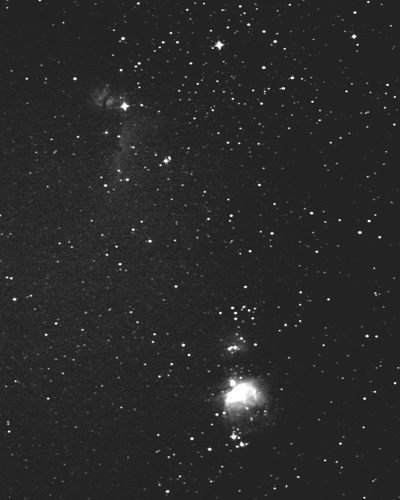
Time is nature's way of keeping everything from happening at once, and it isn't doing its job.
Today I was very busy at work, but the new Digital Rebel XTi arrived, along with several other
items, one of which was a B+W (Schott) 091 deep red filter.
The importance of the filter is that, combined with the filter built into the camera, it picks
out a very narrow band near 656 nm, the principal wavelength of hydrogen emission nebulae.
City lights and everything else are cut back sharply.
Above you see a single 6-minute exposure
of southern Orion at ISO 400 through such a filter, with a
Sigma 105-mm lens wide open at f/2.8, using the
Digital Rebel XTi at ISO 400 and automatic noise reduction (dark frame subtraction).
I converted the picture to black-and-white and raised the contrast considerably with
Photoshop.
This is a very rough, quick test of the new camera and filter.
Right now I have a backlog of images to process, going back to last month.
Eventually you'll see the best of them here.
Permanent link to this entry


|

|
2006
December
10
|
Miscellany
Happy Second Sunday in Advent! The First Sunday in Advent went right past me as far as this
blog is concerned, mainly because I was writing from a backlog of material, mostly in advance,
and not thinking about the date.
Odd quirk of law: Some states let you put a provision in your will such that
anybody who
challenges it can't inherit under it. I think it is a rotten idea — what
if the will is fake? Many challenges revolve around exactly that possibility.
(The obvious thing to do is make a fake document that forbids people to accuse it of being fake.)
Apparently, some judges agree with me.
Want to fix an Olympus camera?
This set of pages is jam-packed with useful
information. I'm going to battery-mod my OM-1 and try to fix Cathy's OM-10 next week.
More news (with copious illustrations) as the projects proceed.
Look at this remarkable picture
of nebulae in Orion. Tony Hallas took it under full moonlight (!) using a filter that blocked
out almost all light except the wavelength of hydrogen-alpha.
He did it with a CCD, but a modified DSLR could have done the job.
Finally, enjoy this
amusing picture of Pablo Picasso and 8 rolls or croissants.
It's part of a very good online photography gallery.
Permanent link to this entry
Linux dying?
Here is one of many pundits
saying that the heyday of Linux is coming to an end.
His point can be summarized in one sentence:
Linux is a follower, not a leader.
As long as the goal is simply to use PCs as cheaper Sun workstations,
Linux wins. It lets you do exactly what you would have done with a much more expensive
computer a few years earlier. For science and academia, this was, for several years,
a compelling advantage.
But what happens when you outgrow the software of 1995? Real innovation comes from Windows and MacOS,
as well as some unfortunately neglected projects such as BeOS. With Linux it's always, "We can do
that too," never "We did it first." And nowadays both MacOS and Windows have subsumed UNIX.
Windows has subsumed UNIX? Yes, and I don't mean Cygwin or virtual machines.
Windows has been POSIX-compliant for quite a while; it's just that most people never
install anything that uses the UNIX API.
Windows (Win32) and UNIX are, broadly speaking, the same class of operating system.
For real innovation, look at a newer part of Windows
known as .NET Framework.
Permanent link to this entry


|

|
2006
December
9
|
Grossan Hydro-Pulse repair notes and alternatives
Nearly two years ago I wrote about a gadget called the
Grossan Hydro-Pulse
which cures the common cold.
(It really does. Click on the link to find out how.)
Ours has not held up well. In less than 2 years of occasional use, it lost power
and became inoperative.
Others, reviewing it on Amazon, have also
reported that it is cheaply made and unreliable.
Last night I took ours apart and fixed it.
The problem was the grease on the reciprocating part of the mechanism.
It was black and crumbly.
I scooped it all out and put in clean synthetic grease,
and the machine came back to life.
You can buy the same machine for half the price
from OraTec without the nasal
irrigation tips.
You can also get nasal irrigation attachments
for Water Pik machines.
That's what we'll probably switch to.
Permanent link to this entry


|

|
2006
December
8
|
Better than an MS76 battery
|
If you have a film camera that uses the classic MS76 (EPX76) or SR44 battery,
try a 357 instead. Same size, same voltage, slightly longer life, and much lower
price because it's not a "camera" battery. Apparently the markup on a "camera" battery
is to pay for the sales clerk to open up your camera and put the battery in it.
I get my 357's at Kroger for about $2.
Beware of much cheaper alkaline batteries of the same size and shape.
(Unless, of course, your camera actually likes them; most cameras don't.)
They have a shorter life and a poorly regulated output voltage.
|
|
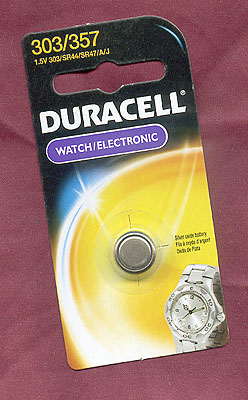
|
Permanent link to this entry
A good deal on an extended warranty
Thanks to Santa Claus and my consulting clients (bless them!), I just ordered
a Canon Digital Rebel XTi (the
best DSLR for astrophotography that is currently on the market)
from KEH in Atlanta, a very reliable dealer
that happens to offer the lowest price right now.
To my astonishment, they offered me a good deal on an extended warranty — $49.95 for 3 additional
years.
That's $16.65 per year, or about 1/50 of the list price of the camera per year.
This seems to mean they're betting that the mean time before failure is more than 50 years.
Actually, of course, they're also betting that most people will stop using the
camera due to obsolescence long before it wears out.
And another economic factor is that once the camera survives the first year, you know it's
not a lemon, so subsequent years aren't as expensive to cover.
That is a deal I'll take.
Far too many extended warranties are more like 1/4 of the list price per year,
as if you would expect the gadget to fail in 4 years.
And that doesn't speak well of the reliability of the gadget.
Permanent link to this entry


|

|
2006
December
6-7
|
Economics
Greg Mankiw has an interesting list of
things economists agree on.
Among them:
- The Social Security system needs changes. (What else is new?)
- Farm subsidies are bad; they don't really help the farmers or anyone else.
(If you can't make money growing something, you don't need a subsidy, you need
to grow something different.)
- School vouchers are good. (What's wrong with free choice and open competition?)
- Tariffs and limits on outsourcing are bad.
(Why compel people to pay more than the open market price for anything?
All you're doing is forcing waste.
And if foreigners will do some of our work for us cheaply, that frees our
people to do other work.)
He also argues that we should
tax things we want less of,
not tax things we want more of.
Permanent link to this entry


|

|
2006
December
5
|
What wat is this?

Photographed in September 1973.
If you know Thailand in detail, I'd appreciate your assistance identifying this ancient monument.
I think it is Wat Phu Khao Thong
("Temple of the Mountain of Gold"),
but am not positive;
recent pictures of that site give the impression that the tower is much whiter
(which may simply mean that the old one has been cleaned up).
The architecture is unique, with a combination of
Burmese pedestal and Thai chedi (steeple),
so this must be it, although I cannot find any positive confirmation that it was indeed
refurbished recently.
We — that is, the U.S. delegation to the International Science School in Australia —
visited it in 1973 and I didn't catch the name of it then.
All I know is that it's near Ayutthaya, it is much taller than any other such structure in the area,
and we were able to climb up to a balcony that goes all the way around it at mid-height, from which
there was an excellent view.
I recall being told that it was built to commemorate a military victory
— against Cambodia, I thought, but if I've identified it correctly, then Burma.
Permanent link to this entry


|

|
2006
December
4
|
Victim of GPS? (Apparently not, but a tragedy nonetheless.)
A CNET editor, James Kim, and his family
went missing in a snowstorm in Oregon
a week ago and have not yet been found.
There is speculation that they were
misdirected by a computer GPS navigation system.
Others have pointed out that GPS devices, working automatically from
digitized maps, have been known to direct drivers onto Forest Service trails
and other very rough back roads (which, on the map, look just like
any other roads).
Our thoughts and prayers are certainly with the Kims.
Update: As of Dec. 5, Mr. Kim's wife and daughters have been found, with their car;
Mr. Kim himself set off on snowshoes a couple of days ago and his path is being tracked.
Unconfirmed reports are that the car was on a Forest Service trail, not
a public road.
Update: On Dec. 6, Mr. Kim was found dead.
Media reports confirm that the family was on a road that is closed in winter,
but it was apparently a map, not a GPS system, that led them onto it.
In another recent incident, a British ambulance crew drove
200 miles out of the way
because of blind obedience to a navigation system.
I should clarify that the problem is not with GPS — which always measures
positions accurately — but with the digitized maps and search algorithms used by
the computer.
Or perhaps they went to an address in Manchester instead of a similar-sounding address
in the suburbs of London. It may not even have been the computer's fault.
Permanent link to this entry


|

|
2006
December
3
|
Slide digitization marathon
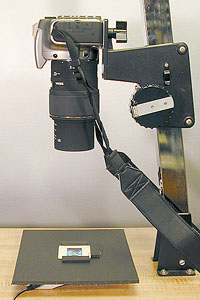 Last night I digitized over 300 old 35-mm slides with this setup
(Canon Digital Rebel, Sigma 105/2.8 macro lens, light box, and homemade mask).
It was a quick-and-dirty job, to preserve some fading slides that I was never going to have
time to digitize with my good scanner (which takes 2 minutes per slide).
I got through all 300 in less than an hour.
Last night I digitized over 300 old 35-mm slides with this setup
(Canon Digital Rebel, Sigma 105/2.8 macro lens, light box, and homemade mask).
It was a quick-and-dirty job, to preserve some fading slides that I was never going to have
time to digitize with my good scanner (which takes 2 minutes per slide).
I got through all 300 in less than an hour.
Below you see the Taj Mahal as I saw it in 1973.
As you can see, the slides were dirtier than I realized, and I may go back
and clean them. But even if I don't, the image is preserved in digital form.
(And I cleaned the dust off digitally on December 4; that's why you don't see it now.)
This is Fujichrome 100, and it passed through numerous airport X-ray machines before
development, leaving the blacks a medium brown color. At least it hasn't faded much.

Permanent link to this entry
I'm not getting all of my e-mail,
and neither are you
The spam crisis has died down just a bit, but I'm sill having to open up "Junk Mail" folders
and fish important messages out of them.
In the other direction, some fairly important e-mail that I've sent to other people has
bounced back or never arrived.
Please be skeptical about the e-mail system.
It does not work with 100% reliability right now.
Learn how to log on to your ISP and open the "Junk Mail" folder.
You may be surprised at what's in it.
Permanent link to this entry
Today's odd bit of computer law
A law in Georgia
(just affirmed by the
state Supreme Court)
apparently requires you to
put your name and address on any music CDs or video discs that you
make for distribution.
The idea is to prevent piracy,
but I wonder why the state is getting involved in something that ought to be a matter
of federal law.
More importantly, this law is not well-known and I fear a lot of people are
going to violate it without knowing it.
For example, Covington Innovations discs, on the rare occasion that we make anything
for distribution, have had only a name and a web address. Is that enough?
As has often happened with Georgia laws, I think they hit much more than their intended target.
The idea was to prohibit copies that falsify their origin by pretending to come
from the original publisher when they don't.
The actual law is broader than it needs to be.
And if you read the individual Justices' opinions in the Supreme Court case, you'll find
that that's how they see it. Several say that the law should only apply to intentional piracy.
Two of them (Melton and — see the very last line — Sears)
would rather throw the law out altogether because it appears to prohibit, among other
things, anonymous political speech. What if somebody wanted to make a political CD or DVD
and distribute it anonymously? In a free society, that ought to be permitted.
Permanent link to this entry


|

|
2006
December
2
|
Yan, tan, tethera, methera, pip...
In all my years as a linguist I never knew, until today, about sheep-counting numerals.
But they're in Wikipedia and other reliable sources, so they must be real.
In some areas of northwest England that border on Wales, shepherds used to count sheep
using number-words derived from Welsh or a closely related language rather than English.
Compared to the original Celtic, the sheep-counting numerals have been altered to be
more rhythmical or rhyming. For instance, "three, four" is tethera, methera
whereas in Old Welsh the words didn't rhyme (tri, petuar). There are several more
rhyming pairs in the system, which only counts up to 20.
And that may be the origin of the practice of counting sheep to get to sleep.
Practicing the sheep-counting numerals, with their multiple rhymes, was rather like reciting
a nursery rhyme.
By the way, there is bitter debate over what I think is a non-question: Are the sheep-counting
numerals a survival of Celtic language in England or where they brought in from Wales?
Who cares? Wales is only a few miles away and there's nothing to prevent people (or words) from
crossing the border any time.
Incidentally, you can classify Celts by asking them to count to five in their language.
If the word begins with k, the language is some type of Gaelic (Irish
or Scots). If it begins with p, the language is Brythonic (Welsh).
Permanent link to this entry
How to digitize 35-mm slides
Today I finally got around to comparing 3 methods of digitizing 35-mm slides:
a good film scanner, the slide copying attachment on a Coolpix 990,
or a DSLR with macro lens and light box.
Results
here.
What you see is that all three are surprisingly good.
What you don't see is that the Nikon film scanner wins with difficult
slides; it preserves more dynamic range.
Permanent link to this entry


|

|
2006
December
1
|
Potentially life-saving information for girls and young women
Recently, while following up a familiar name that I saw in the
Moultrie newspaper, I read about
Jennifer Ann Crecente and, after contacting the family,
determined that I used to know
her great-grandfather.
(Yes, I feel very old saying this. I used to know someone's
great-grandfather. Back in the middle of the last century!)
Back in February, Miss Crecente, then 18 years old,
was murdered by a would-be boyfriend.
Her family has set up an
organization
to reduce violence against women,
particularly abuse or threatening behavior in dating relationships.
They publish a useful checklist
of warning signs of a potentially abusive relationship.
What it boils down to is that violence isn't "macho," it's destructive.
Preoccupation with violence or intimidation is not normal masculinity.
Read their warnings. I would add two more:
- He will try to accustom you to his violent nature gradually so there is no specific
moment when you can say he went over the line. ("He's done this before and it came
out all right...")
- He will try to make you guilty too — he will get you to do something illegal or
shameful so you'll be reluctant to seek help. Or he'll convince you that his misbehavior
is somehow your fault.
Cell phones are a great help, and no girl should go out without one.
I particularly like the idea of having code words that a girl can use
to call for help when phoning her family in the presence of a threatening person.
The bottom line? Young women need to be in charge and feel in charge of their
own safety. And society as a whole needs to take more responsibility for how people treat each other.
Permanent link to this entry
Expect poor Net performance today
There is reportedly an al-Qaeda
threat to hack into financial
institutions today (December 1).
Permanent link to this entry


|

|
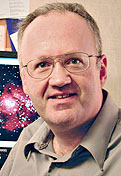




















 Last night I digitized over 300 old 35-mm slides with this setup
(Canon Digital Rebel, Sigma 105/2.8 macro lens, light box, and homemade mask).
It was a quick-and-dirty job, to preserve some fading slides that I was never going to have
time to digitize with my good scanner (which takes 2 minutes per slide).
I got through all 300 in less than an hour.
Last night I digitized over 300 old 35-mm slides with this setup
(Canon Digital Rebel, Sigma 105/2.8 macro lens, light box, and homemade mask).
It was a quick-and-dirty job, to preserve some fading slides that I was never going to have
time to digitize with my good scanner (which takes 2 minutes per slide).
I got through all 300 in less than an hour.
